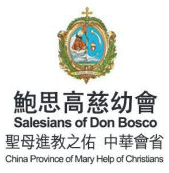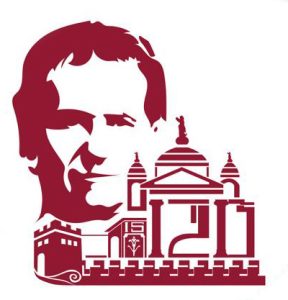
【慈幼通訊社 ─ 2019 年 11月 16 日香港訊】 ─ 東亞澳區各位培育委員及社會傳播委員,於香港慈幼會修院聖母樓,進行了一整天的聯合聚會。
慈幼會培育議員Ivo Coelho神父、社會傳播議員Filiberto Gonzales神父、東亞澳區議員賢明漢神父、37名來自東亞澳區12個會省的委員,以及5個代理區的培育及社會傳播的代表,在兄弟友愛的氣氛中,共同討論第28屆全代會所提出的重要問題:為今天的青少年需要怎樣的慈幼會會士?這次聯合聚會把問題修改為:為今天數碼世界的青少年需要怎樣的慈幼會傳播者?

以四個不同卻互補的層面(學會生活、為人、認知、
處事),探索慈幼會傳播者的輪廓:與會者分成六個小組,以便有意義地探討慈幼會士的輪廓。
他們在以下資料的指引下作討論:
1. 鮑思高神父有關傳播良好讀物的信函;
2. 慈幼會會憲及會規第C 6、C 43、 R 31-34及 R 41條;
3. 《生活的基督》(Christus Vivit) 宗座勸諭;
4. 教宗本篤及方濟各的「世界社會傳播日訊息」。
六個小組花了一整個早上,分享他們個人的見解及反省。下午,他們進行大組聚會。六個小組匯報了上午小組討論的結果。慈幼會巴布亞新畿內亞——所羅門會省社會傳播委員Ambrose Pereira神父,把這天的聚會綜合如下。
 「這次大會的成果,在於帶動個別有價值的觀點,去發掘慈幼傳播者的輪廓。慈幼會士是福傳者、教育者及傳播者,在數碼世界中,仍勉力在具體的臨在、創造性的策勵、透明而真實的見證中,建立極致的平衡。他有一顆向青年福傳的心火,同時也注重自身的持續培育。他不斷與時並進,從青年中學習,同時亦意識到數碼革命的危險與陷阱。無論透過數碼還是傳統媒介溝通,他也勉力懷著自尊、敬重與真實,意識到一切內容都是無時間性的,世代流傳。懷著『善牧』之心,以及對語言、文化及青年議題的理解,,與青年同行,教導他們對媒體懷有批判與創新。這樣,他們便能走到最脆弱的人前傳播福音。」
「這次大會的成果,在於帶動個別有價值的觀點,去發掘慈幼傳播者的輪廓。慈幼會士是福傳者、教育者及傳播者,在數碼世界中,仍勉力在具體的臨在、創造性的策勵、透明而真實的見證中,建立極致的平衡。他有一顆向青年福傳的心火,同時也注重自身的持續培育。他不斷與時並進,從青年中學習,同時亦意識到數碼革命的危險與陷阱。無論透過數碼還是傳統媒介溝通,他也勉力懷著自尊、敬重與真實,意識到一切內容都是無時間性的,世代流傳。懷著『善牧』之心,以及對語言、文化及青年議題的理解,,與青年同行,教導他們對媒體懷有批判與創新。這樣,他們便能走到最脆弱的人前傳播福音。」
的確,這次雙委員會的互動充滿成果,成員相信只有共同合作,才能繼續成為今天青年的鮑思高神父。
處身於現代不同傳播媒體的挑戰之中,他們繼續運用鮑思高神父所使用,最有效力的傳播方式 ─ 心 ─ 那聆聽、關顧的心,帶領人們到達天主無條件的愛中。
EAO joint meeting of Formation and Social Communication Commissions
(ANS – Hong Kong, 16 November 2019) – The East Asia-Oceania delegates of the Commission on Formation and of the Commission on Social Cmmunications spent the whole of 16 November for this joint meeting in the Casa Maria of the Salesian Missionary House in Hong Kong.
Together with Fr. Ivo Coelho, SDB, the General Councillor for Formation, Fr Filiberto Gonzales, SDB, the General Councillor for Social Communications, and Fr Vaclav Klement, SDB, the EAO Regional Councillor, the 37 delegates from the 12 EAO Provinces and 5 Delegations of both commissions were in fraternal spirit while discussing the predominant question that the General Chapter 28 posed: What kind of Salesians for the young people of today? This joint assembly reworded it as: What kind of Salesian communicators for the youth in the digital world?
Seeking a profile of the Salesian communicator with the four inseparable and complementary aspects: learning to live, to be, to know, and to do, the assembly was divided into six small groups to facilitate arriving at a meaningful attempt at this Salesian profile.
They were guided by the following reading materials:
1. The Letter of Don Bosco on spreading good books;
2. SDB Constitutions and Regulations article C 6, C 43, R 31-34, R 41;
3. The Apostolic Exhortation Christus Vivit;
4. The World Communications Day Messages of Pope Benedict and Pope Francis.
The six groups spent the whole morning sharing their personal insights and reflections. In the afternoon, everybody gathered in a plenary session. The six groups reported to the assembly the results of their morning group sessions. With the help of Fr. Ambrose Pereira, SDB, the Social Cmmunications Delegate for Papua New Guinea-Solomon Island Province (PGS), the following is the synthesis of this day’s joint meeting.
“The richness of the synodal process drove home valuable insights to discover the profile of the Salesian communicator. The Salesian is evangelizer, educator and communicator, immersed in the digital world yet striking a sublime balance of his physical presence, creative animation, transparent and authentic witness. He has at heart the evangelization of the young, while he is open to his own ongoing formation. He is constantly updating himself and learning from the young, while being aware of the dangers and pitfalls of the digital revolution. He strives to communicate with dignity, respect and truth using both the digital and traditional media, conscious of the fact that all content is created timeless and lasts for generations. With the heart of the ‘Good Shepherd,’ and understanding the language, culture and issues facing young people, he journeys with the young, educating them to be critical and creative of the media. They in turn reach out to evangelize the ones who are most vulnerable.”
It was indeed a very fruitful interaction between the two commissions whose members believe that only in working together can they continue to be the Don Boscos to the young people of today.
Amidst all the contemporary means of communication, they are challenged to continue to use the most powerful means of communication which Don Bosco used – the heart – that listens, that cares, and that leads to the unconditional love of God.


